Conus textile Linnaeus, 1758
Textile cone, 107mm
Conus
textile may be
the most widely recognized cone shell, although it is easy to confuse it with
a number of the other species of cones that have tent-shaped markings. It is
a large cone with a wide shell, and is common in some parts of the Indo-Pacific,
although here in the Marshall Islands it is moderately rare. Although a mollusk
eater, this species has been reported to have fatally stung humans. We have
not seen the details of all the records, but we have seen people less familiar
with the different species of Conus misidentify young specimens of
Conus geographus
with C. textile. So there is a chance that fatal stings reported to
C. textile could have been caused by C. geographus, a well-known
fish eater with a highly venomous sting. However, as this is nothing more than
a guess, it would still be wise to treat C. textile as potentially
highly venomous. In the Marshalls, C. textile lives primarily on lagoon
reefs and pinnacles, although a few specimens have been seen wandering about
the seaward reef dropoff at night.
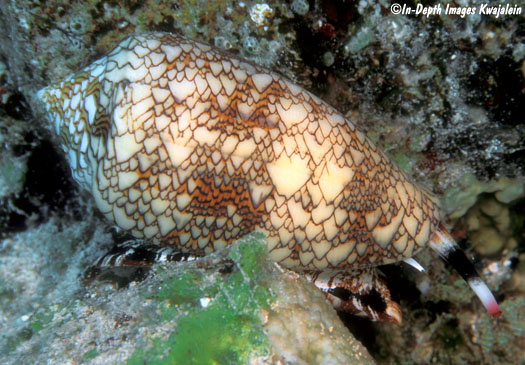
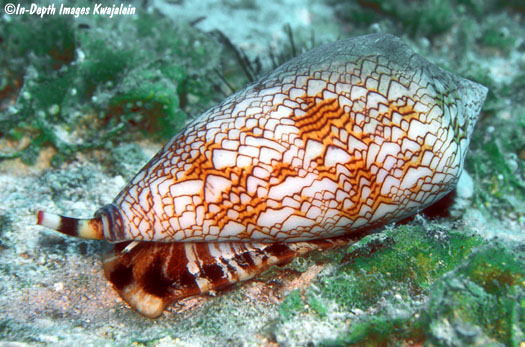
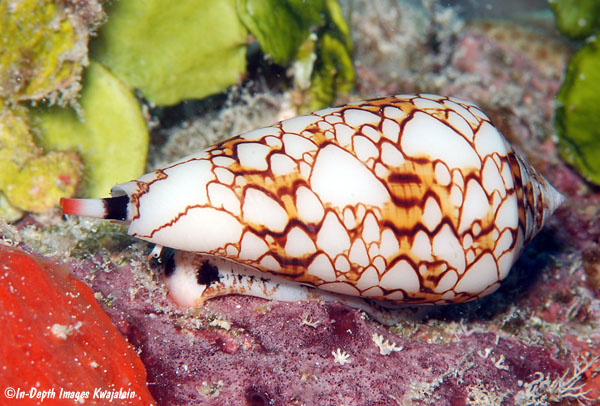
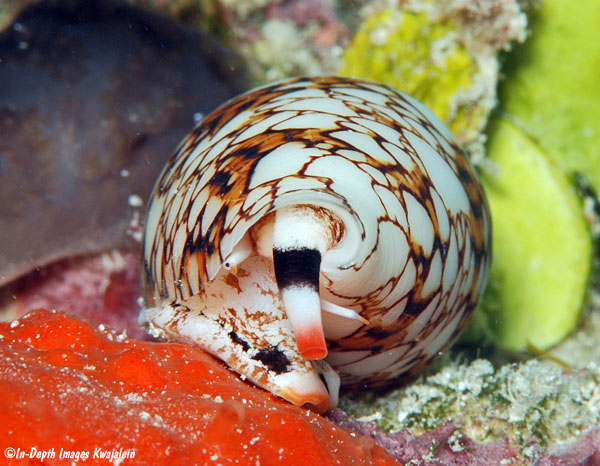
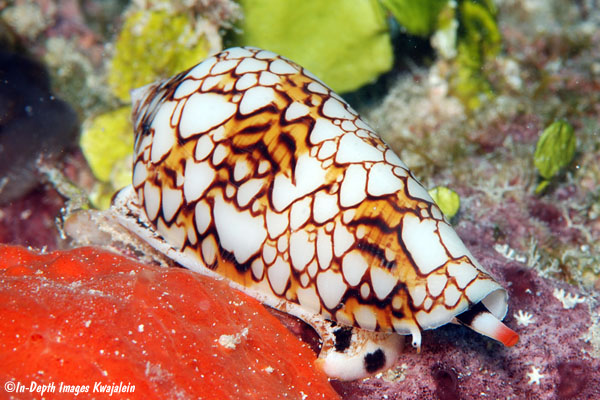
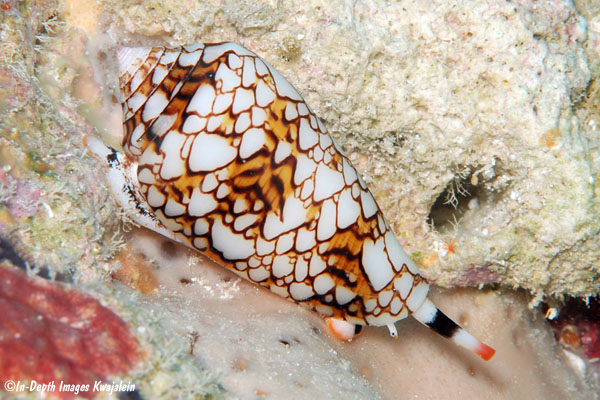
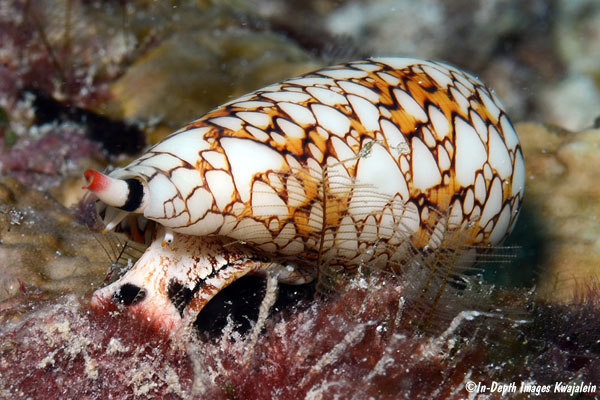
A mollusk eater, Conus textile is known to eat members of a variety
of seashell families, such as Cymatidae, Bursidae, Trochidae, Turbinidae, and
Cypraeidae. One of their favorites seems to be the basket shell, Nassarius
papillosus. But Nassarius has a pretty effective escape response.
In the next series of photos, a Nassarius wanders near a hunting Conus
textile. These photos of the Conus attacking both the Nassarius
and the Bursa are from Hawaii.
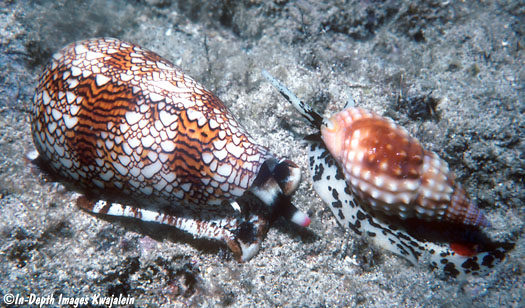
The cone smells the Nassarius prey and extends a pink tentacle that
would deliver the venomous harpoon from its mouth.
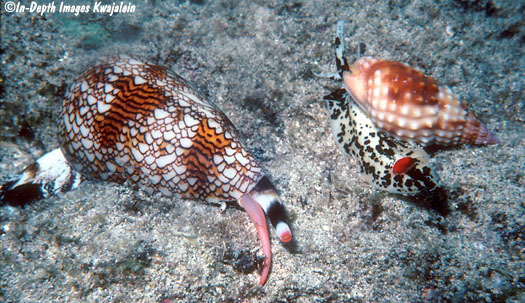
When the Nassarius detects
the hunting cone, it pushes out its foot and twists it around, often causing
it safely bounce away and escape.
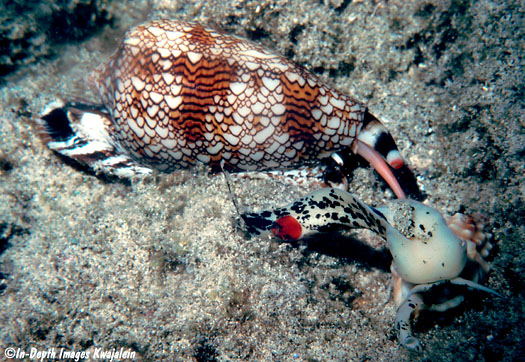
Sometimes, however, the Nassarius gets into a position where it can
no longer bounce. The cone finds the foot and delivers its venomous harpoon.
The photo below shows what is either a cloud of excess venom from the sting
or may be mucus released by the Nassarius upon being stung.
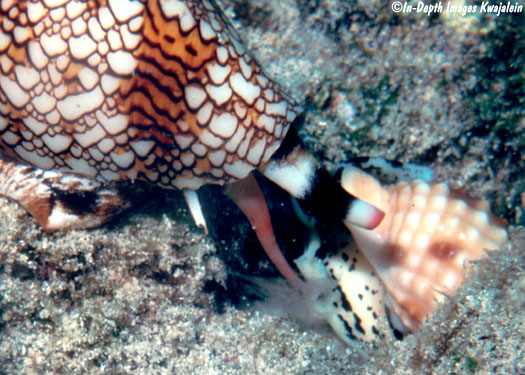
Once the Nassarius is subdued, the cone expands its mouth into the
aperture of the prey's shell, surrounding the animal. They stay locked together
this way for an hour or more while the cone digests the animal right out of
the shell.
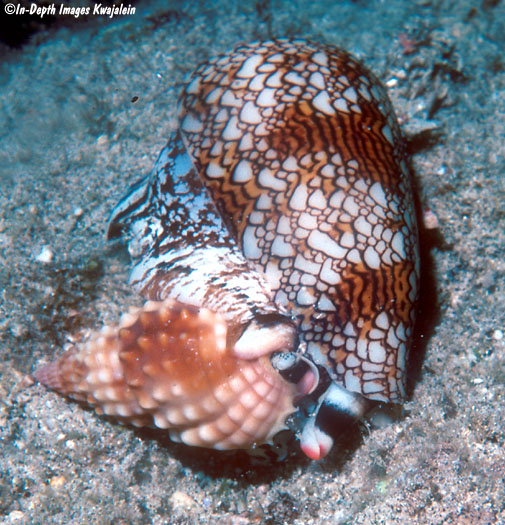
The cone in the series below is
attacking a small Bursa rosa.
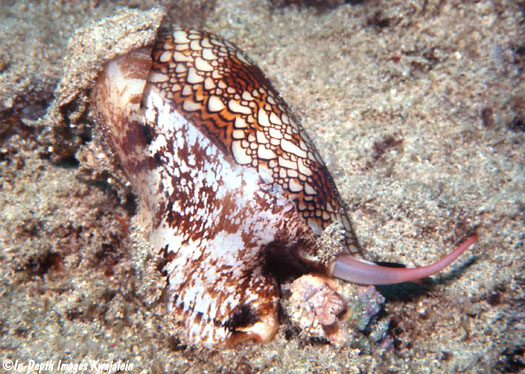
The cone finds the aperture and
extends its stinger into it to find the retracted animal.
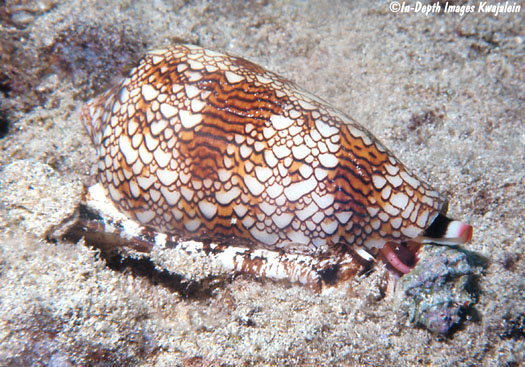
But before it is stung, the Bursa literally shoves the cone away using
the long proboscis it uses to eat worms from holes. Right after this picture
was taken, the cone rapidly and violently retracted into its shell, perhaps
bitten by the radular teeth at the end of the Bursa's proboscis. With
the cone temporarily repulsed, the Bursa made good its escape.
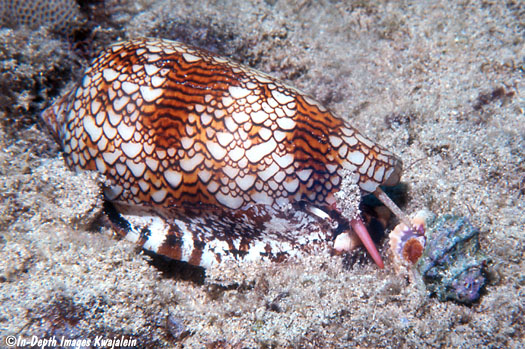
At the tiny stage of the specimens
below (maybe 15mm), it was impossible to tell for sure which tented cone it
would grow up to be, but we suspect Conus textile.
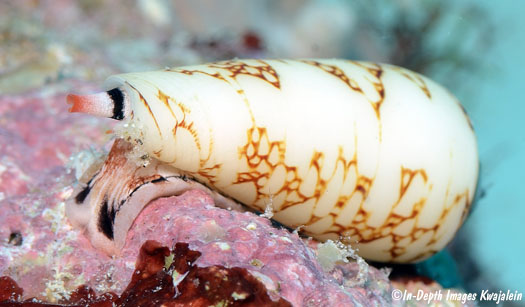
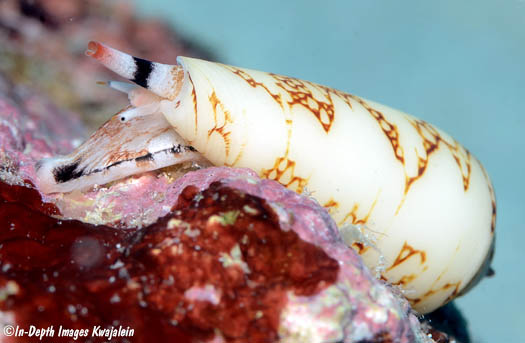
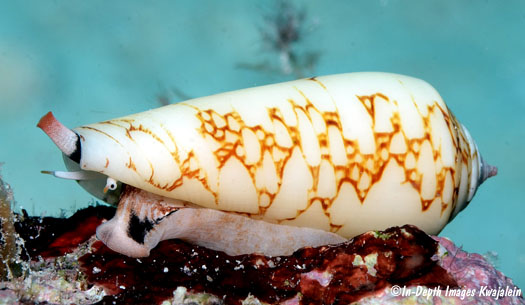
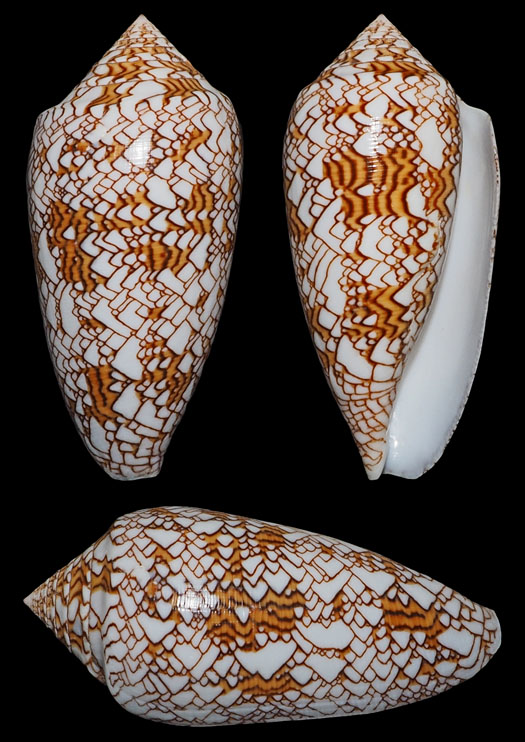
Created
4 July 2009
Updated 2 April 2022
Return to cones
Kwajalein Underwater home



















